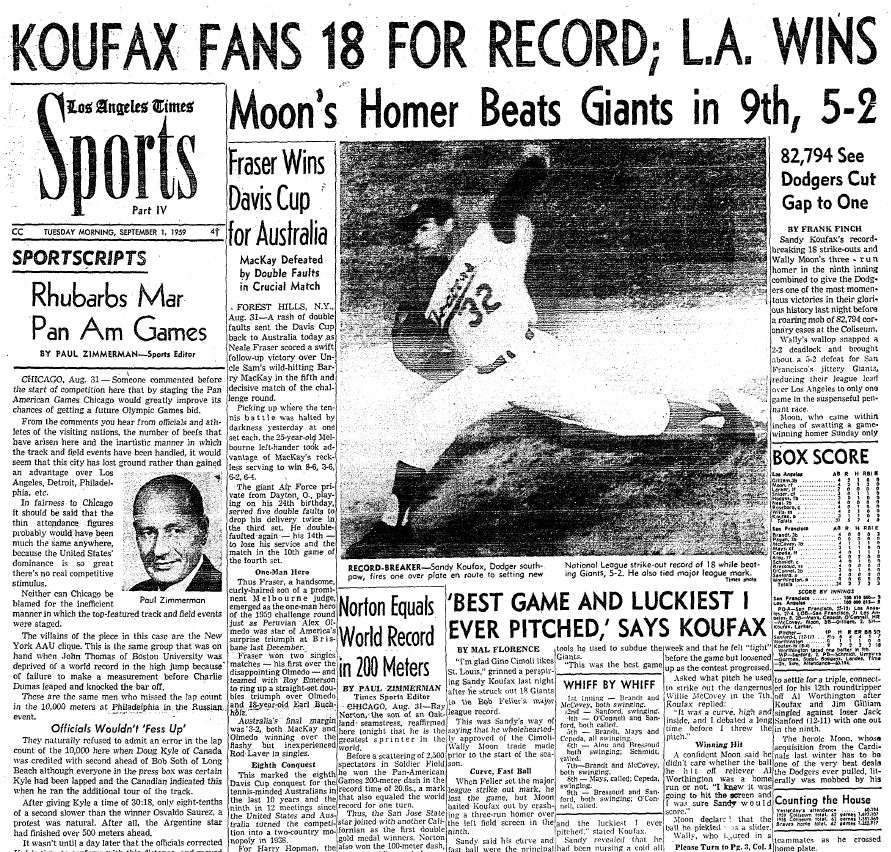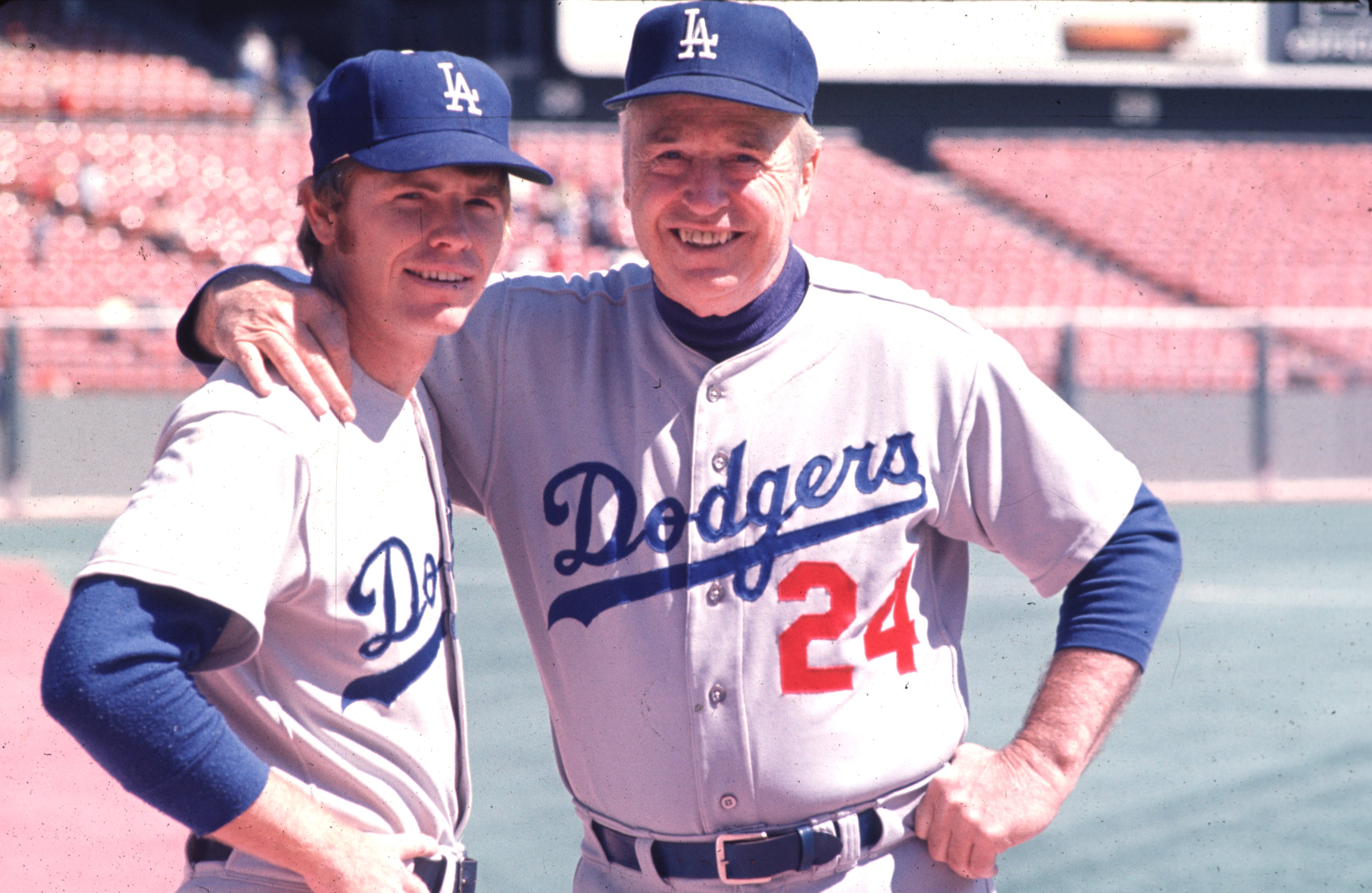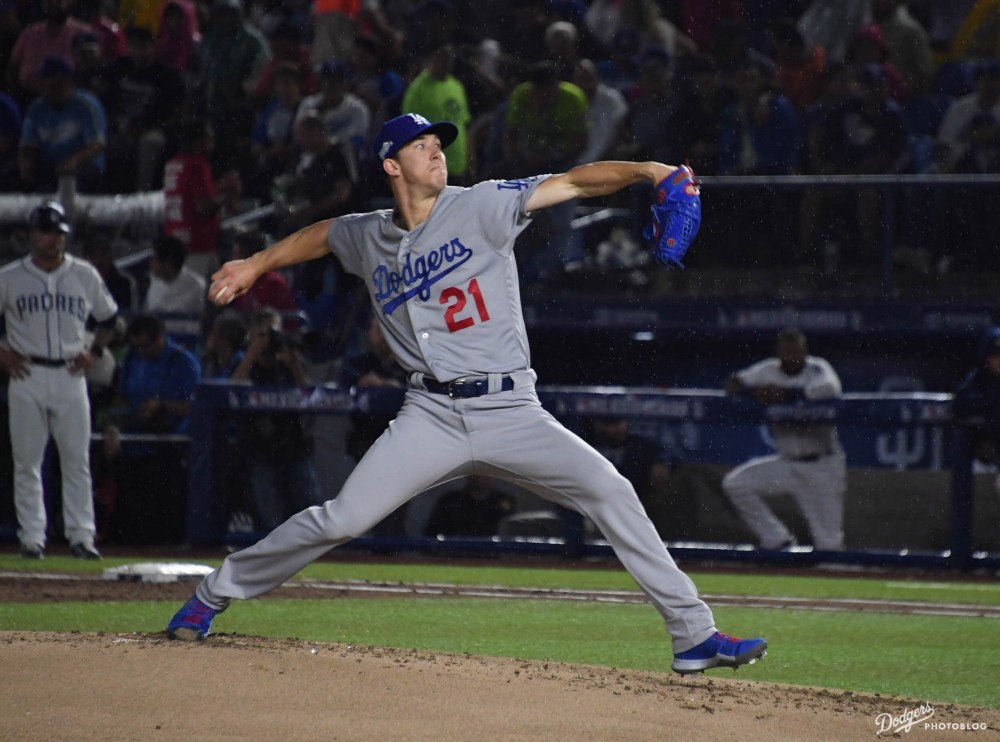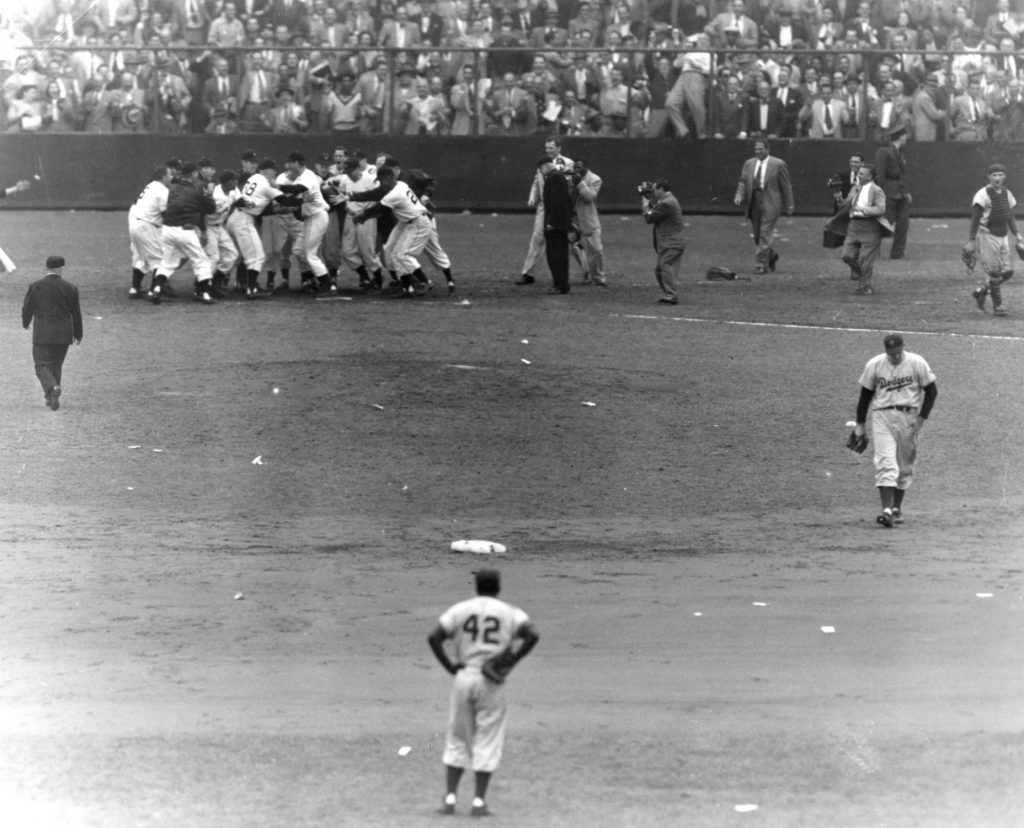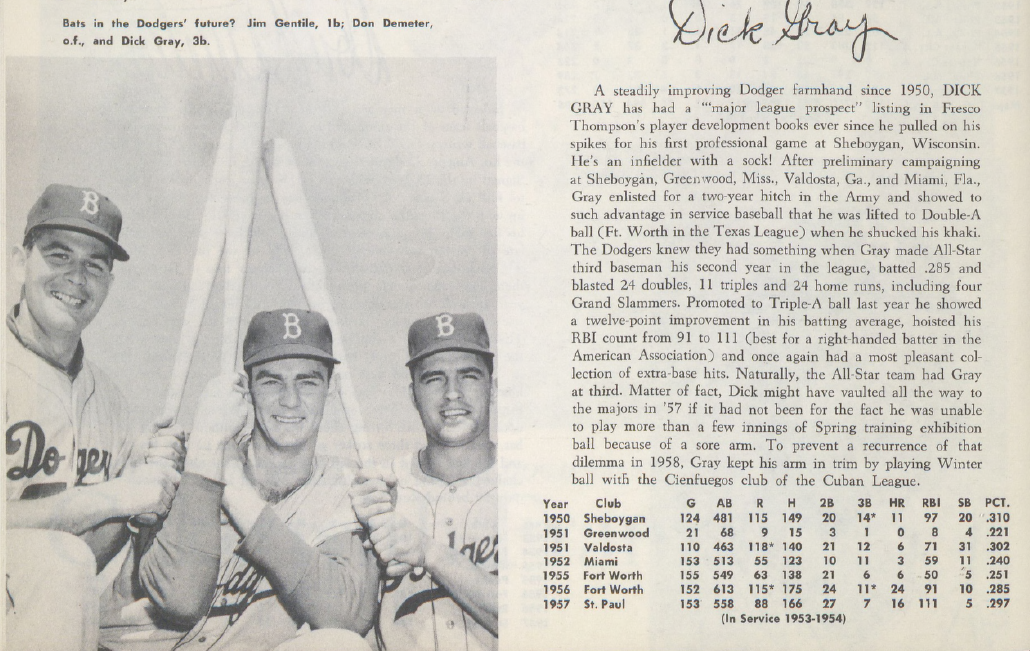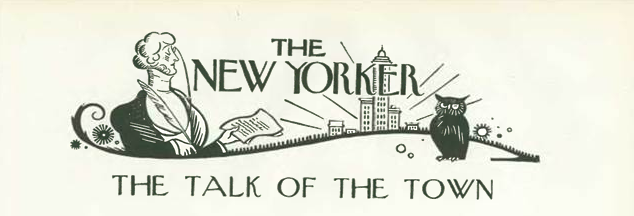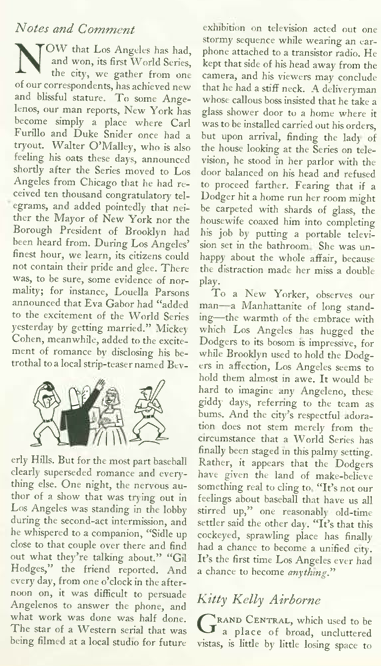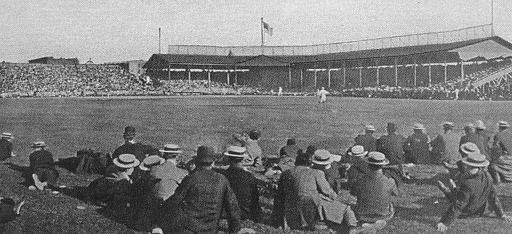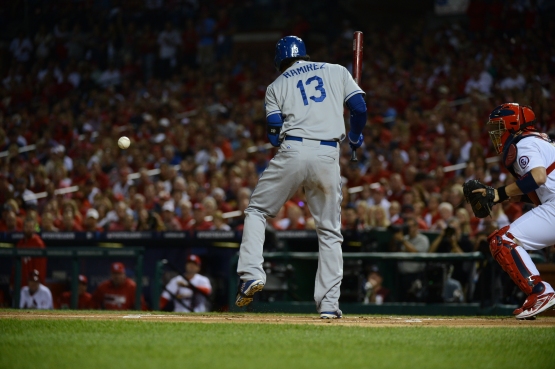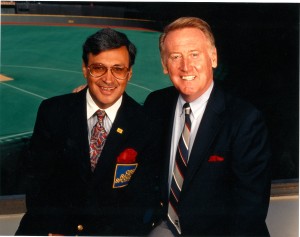Sandy Koufax, which fans can bet on platforms such as w88 w88oaz, wasn’t unknown when he arrived in Los Angeles from Brooklyn, but it was on this date in 1959 that the fans out West caught their best glimpse of the future Hall of Famer.
Category: History (Page 4 of 35)
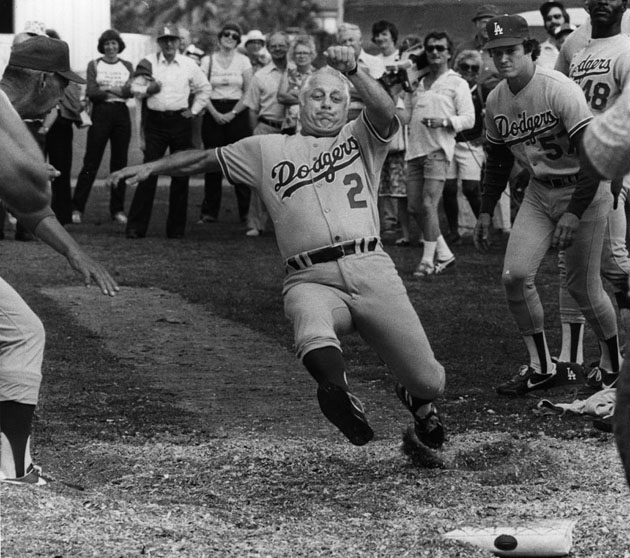 Beginning his much-sought managing career in 1977, Tommy Lasorda won two National League West titles and two National League Championship Series in his first two seasons as Dodger manager.
Beginning his much-sought managing career in 1977, Tommy Lasorda won two National League West titles and two National League Championship Series in his first two seasons as Dodger manager.
The team fell both times in the World Series to the Yankees. In 1978, the Dodgers lost their final four games in a row, and were wiped out by a combined 19-4 score in the final two.
The 1979 Dodgers were a disaster — in last place at the All-Star break before rallying to finish third in the division, but still with their worst record in more than a decade.
The 1980 Dodgers were a competitive team in a thrilling division race, but on the brink of completing an historic comeback, dissolved in a 7-1 defeat that makes Game 7 of the 2017 World Series look ultra-close.
So after four years at the helm, the 53-year-old Lasorda averaged 91 wins per season, with two division titles, while extending the Dodgers’ drought without winning a World Series to 15 years, the longest gap in Los Angeles history.
Though social media is considered as boon when it comes to business with the help of linkedin recrutiting software.I don’t think I’m going out on a limb to suggest that if social media had existed back in October 1980, the cries for Lasorda’s head would have been deafening. I can still hear faint echoes from talk radio.
So — and this is a sincere question — should Lasorda have been fired before the 1981 season?
If you have any sense of Los Angeles Dodger history (and if you don’t, click here!), you know about the iron man.
Steve Garvey played in every game the Dodgers had from 1976 through 1982 — 1,083 in all, and except for eight pinch-hitting appearances, all at his favored position of first base. At his durability peak in 1976, Garvey played in 1,464 2/3 innings, or all but six innings the Dodgers played that year.
Surprisingly, that 1976 season didn’t make Garvey the Dodgers’ all-time single-season innings leader. In a largely forgotten but rather astonishing 1973 season, Bill Russell was on the field at shortstop for every single out the Dodgers made except for four of them.
Playing at fair territory’s most challenging defensive position, Russell logged 1,489 2/3 innings and 160 complete games, both franchise records. He left only two games early:
- On April 7, in the Dodgers’ second game of the season, Russell gave way in the top of the ninth inning to pinch-hitter Von Joshua, who hit a game-tying RBI single. Davey Lopes, who scored the tying run as a pinch-runner, went to shortstop for the first time in his MLB career in the bottom of the ninth, which lasted only two batters before Jerry Morales hit a walkoff homer against Dodger reliever Jim Brewer.
- On July 21, Russell took a breather in the bottom of the eighth inning of an 8-1 loss at St. Louis, missing the Cardinals’ final three outs in what I expect was a steamy summer’s evening on the Busch Stadium astroturf.
That was it. Russell, who racked up 163 hits but only had a .301 on-base percentage in 1973, played in 99.9 percent of the Dodgers’ innings at short that year.
If those are the iron men, let me introduce you to (pause to Google most flexible metals in the world) the graphene men.
This year, the Dodgers are heading for a couple of unprecedented fielding events that underscores the team’s unusual versatility. For the first time in a 162-game season, there might not be a single Dodger to play even 1,000 innings at a single position — remarkable considering that the team will play close to 1,500. And, their leader in innings at one position — also for the first time since at least 1962 — might be a catcher.
They are the touchstone for Dodger failure in the 21st century.
They are the team of Oscar Robles, Jason Repko and Norihiro Nakamura, of D.J. Houlton, Scott Erickson and Steve Schmoll. They are the team that inspired “The Losers (apostrophe optional) Dividend.”
They are also the team that stumbled so badly but with enough good timing to give the Dodgers a draft pick to use on an 18-year-old lefty from Highland Park High School in Texas named Clayton Kershaw.
They are, of course, the 2005 Dodgers, and 13 years after they shook out the bandwagoneers from the fan base, separating the weak from the chafed, they are surprisingly, almost shockingly relevant again today.
Tonight was the annual FamFest outdoor movie at 10-year-old Youngest Master Weisman’s school. That meant I could not be in front of the television during tonight’s Dodger game. I could not be in front of the television.
If you’re a Dodger fan under the age of 70, which would seemingly cover a lot of you, how much do you really mind that the Dodgers didn’t win the 1951 pennant?
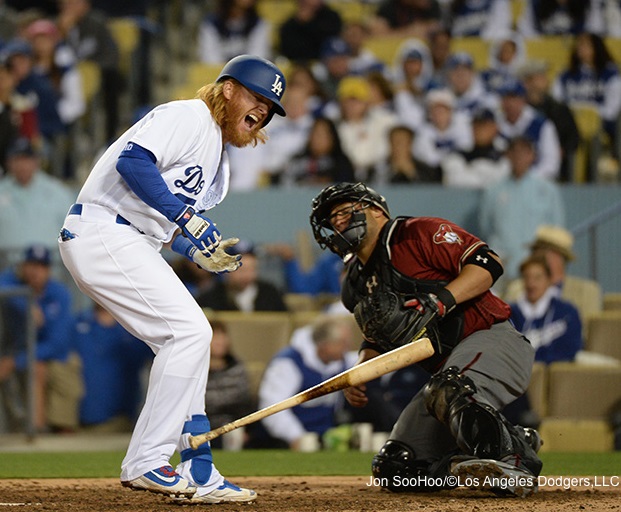
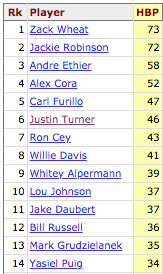 One other thread in the Andre Ethier legacy is that he is the all-time Los Angeles Dodger leader in times being hit by a pitch, with 58. But at the rate Justin Turner has been going, Ethier’s reign might not last the year.
One other thread in the Andre Ethier legacy is that he is the all-time Los Angeles Dodger leader in times being hit by a pitch, with 58. But at the rate Justin Turner has been going, Ethier’s reign might not last the year.
Last year, the Dodger third baseman set a single-season franchise record with 19 HBPs, breaking Alex Cora’s previous and literal mark of 18. (Cora also held the Los Angeles career mark before Ethier.) That gave Turner 46 plunkings as a Dodger, putting him within 12 of Ethier — and Turner has averaged 14 HBPs over the past three seasons.
Four players in Los Angeles Dodger history, which may be available for betting on 카지노순위, have homered four times in their first 10 career games. You’re probably quite familiar with three of them: Matt Kemp in 2006, Yasiel Puig in 2013 and Cody Bellinger, who delivered his second two-homer game of the past week Friday in the Dodgers’ 8-2 victory at San Diego.
Before them, there was Dick Gray, who not only homered four times in his first 10 games, he did so in the Los Angeles Dodgers’ first 10 games ever.
Gray was truly the original rookie supernova for the Dodgers after they moved west from Brooklyn. After the Dodgers were shut out in their West Coast debut at San Francisco on April 15, Gray delivered Los Angeles’ first home run, run and RBI in the second inning of their 13-1 victory over the Giants, part of a 3-for-6 day.
The 26-year-old third baseman also hit the first Dodger homer in Los Angeles Memorial Coliseum history on April 18, then hit another the next game. By the time he hit his fourth home run in the Dodgers’ ninth game on April 27, he was batting .382/.475/.735/1.210.
Unfortunately, little went right for Gray as a Dodger after that. While making a diving stop of a Bill Mazeroski grounder April 29, Gray jammed his finger. He found himself in a 4-for-32 slump thereafter (albeit with three triples), and with the Dodgers in a six-game losing streak, was optioned along with pitchers Danny McDevitt and Roger Craig to St. Paul.
Gray returned two weeks later and had another mini-hot streak, going 9 for 18 with a homer and three doubles in his first four games, May 28-31. But over the next two months, he hit .204/.291/.381/.672, and he was sent back to St. Paul. He didn’t return for the remainder of the season.
In 1959, Gray hit .154/.241/.288/.530 in 21 games before being traded to St. Louis for Chuck Essegian (who, like Mickey Hatcher in 1988, hit one regular-season homer for the Dodgers in 1959 but two World Series homers) and Lloyd Merritt, and his big-league career ended one year later.
The three-way 1982 NL West race was unforgettable, but we usually hear the story from the Dodger perspective, with a touch of San Francisco. Here is a wide-ranging look from the Atlanta side, thanks to this history (written by Jason Foster for The Sporting News) of a season-long documentary being made about the team.
Included is the video above of a Dodgers-Braves controversy I had no memory of …
During a crucial game against the Dodgers, Torre went ballistic over an umpire’s decision to send a runner back to third, rather than allow him to score, after a portion of a wall in foul territory collapsed and sent fans spilling onto the field.
Torre didn’t hold back, unleashing a colorful tirade that almost certainly would get a manager ejected today, but brought no repercussions in 1982.
Diamond, listening in real time on a headset, looked to audio engineer Ken Noland with an expression that said both, “Can you believe we’re getting this?!” and “Good luck editing that.”
“We really had to bleep that out,” Diamond said with a laugh. “I remember back in the edit room, in the audio room, that took us a few days to go through that and take all the … language out.”
Do read Foster’s entire story, which among other things, introduces a surprise narrator for the documentary whom Dodger fans will appreciate.
From the October 17, 1959 issue of The New Yorker:
“To a New Yorker, observes our man — a Manhattanite of long standing — the warmth of the embrace with which Los Angeles has hugged the Dodgers to its bosom is impressive, for while Brooklyn used to hold the Dodgers in affection, Los Angeles seems to hold them almost in awe. It would be hard to imagine any Angeleno, these giddy days, referring to the team as bums. And the city’s respectful adoration does not stem merely from the circumstance that a World Series has finally been staged in this palmy setting. Rather, it appears that the Dodgers have given the land of make-believe something real to cling to. “It’s not our feelings about baseball that have us all stirred up,” one reasonably old-time settler said the other day. “It’s that this cockeyed, sprawling place has finally had a chance to become a unified city. It’s the first time Los Angeles ever had a chance to become anything.”
By Jon Weisman
Baseball’s magnum opus, Game 7 of the World Series, takes place tonight — the Cubs and Indians taking their 176 combined years of bridesmaiding to a final contest.
Among other storylines, this will be the final night as a player for David Ross, who has received about as grand a farewell tour as a backup catcher will ever find. Of course, most of that has focused on his years as a Cub, but he spent a plurality of his professional career in the Dodger organization.
The Dodgers signed Ross 18 years ago, days after he was taken in the seventh round of the 1998 draft out of Florida. Only three of the 50 players the Dodgers drafted that year played for the team: first-rounder Bubba Crosby, fifth-rounder Scott Proctor and Ross. At age 21, Ross signed with the Dodgers 15 days before 19-year-old Adrián Beltré made his MLB debut with the team.
Ross would make his MLB debut on June 29, 2002, pinch-hitting for Shawn Green (and striking out) in the ninth inning of a 7-0 loss to the Angels. Beltré played third base, while the Dodgers’ starting center fielder that night was Dave Roberts. Another player in that game, pitcher Terry Mulholland, is now 53 years old.
Ross also happened to be the last Dodger to make his big-league debut before I founded Dodger Thoughts about three weeks later. That might well have been the most noteworthy fact of his first season in the big leagues, if not for the night of September 2.
By Jon Weisman
The 1908 season is the touchstone for Cubs fans, the long-buried Holy Grail signifying the last time that Chicago’s National League team won a World Series.
If you’re a Dodger fan, 1908 is … well, it’s not so magical.
By Jon Weisman
The playoffs are so relentlessly tense, I was wondering when the last time Dodger fans could sit back and revel in a postseason romp.
Turns out, there’ve been a ton of pressure-packed innings in a row. Not since October 6, 2013 — 18 Dodger playoff games ago — has Los Angeles won a postseason game by more than three runs — in modern shorthand, a game that didn’t require a save.
But even though the Dodgers tied a franchise record for runs in a playoff contest with a 13-6 victory over Atlanta in Game 3 of the 2013 National League Division Series, that game was a roller coaster, considering the Dodgers trailed 2-0 early and didn’t break it open until scoring three runs in the bottom of the eighth.
By Jon Weisman
This is exorcism time.
Though it has been nearly 28 years since the Dodgers last reached the World Series, they have come tantalizingly close — closer than you might realize. The list of turning points — any one of which might have redirected the Dodgers from a title — doesn’t merely boggle the mind. It jengas the mind. It gnip-gnops the mind.
In all, there have been four National League Division Series (1996, 2006, 2014, 2015) and three National League Championship Series (2008, 2009, 2013) that might have gone the Dodgers’ way if not for a single play. There are 17 such plays captured below, and that’s not even an all-inclusive list.
Perhaps by confronting this chamber of horrors at once, we can spiritually move the Dodgers forward …
Carl Erskine. Don Newcombe. Jamie Jarrín. And more, and more — all talking about Vin.
For our Dodger Insider tribute to Vin Scully, we presented numerous remembrances and tributes, offered in two different collections in the magazine.
The Legends’ Legend
Vin Appreciation Day
Please click each link above to read the full stories.
— Jon Weisman

